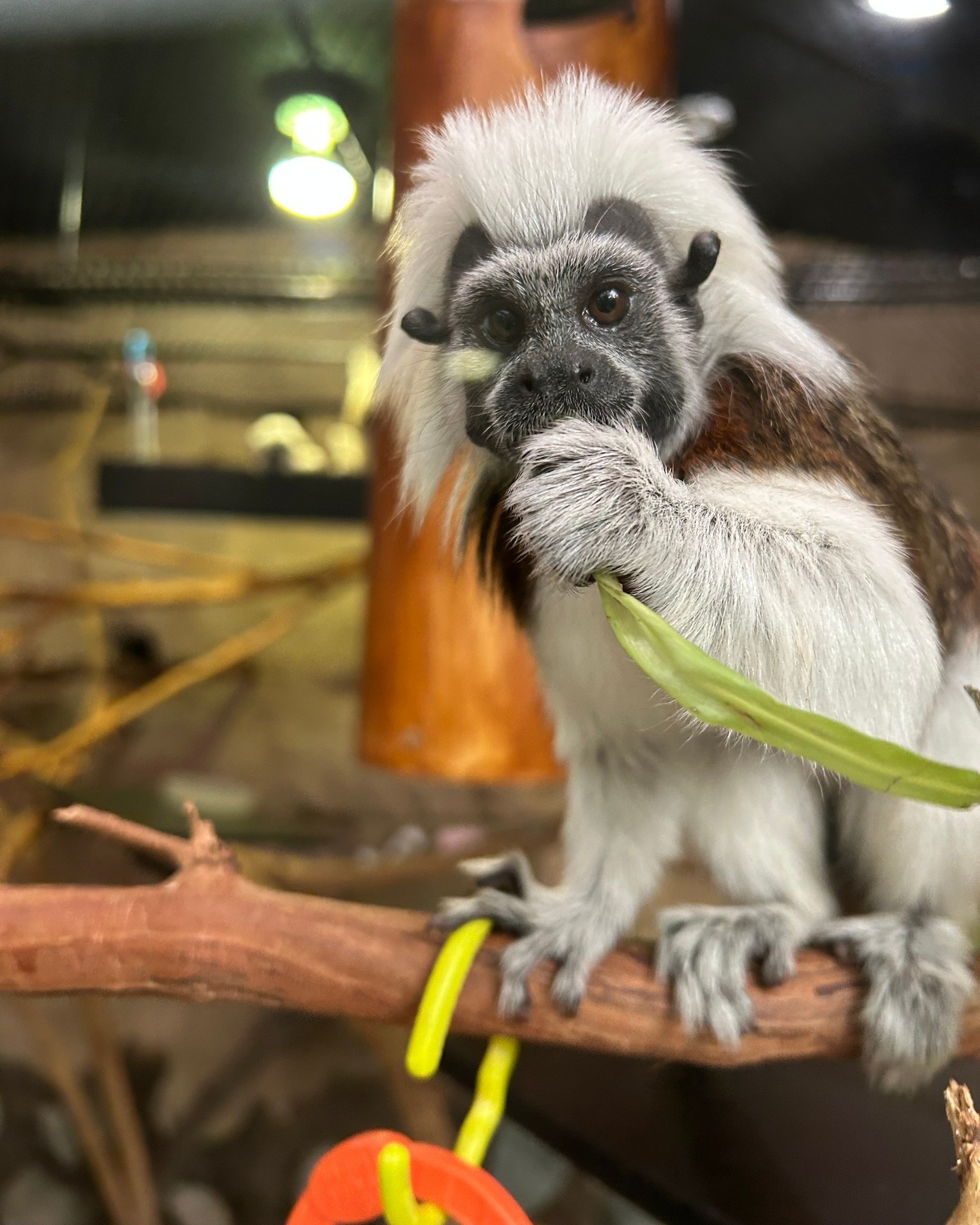- Cotton-top tamarins are among the smallest primates in the wild.
- The significance of Hello from Clark the cotton-top tamarin in education and conservation.
- Habitat, diet, and social structures of cotton-top tamarins.
- Threats to cotton-top tamarin populations and conservation efforts.
- The role of zoos in the preservation and education regarding cotton-top tamarins.
Cotton-top tamarins are indeed some of the smallest primates worldwide, standing out due to their diminutive size and striking appearance. These tiny animals, typically weighing around one pound and measuring about 8 to 12 inches long, are characterized by their trademark tufted white hair atop their heads. This distinct physical feature, alongside their expressive faces, has made them a favorite subject for animal lovers and researchers alike.
With the introduction of Hello from Clark the cotton-top tamarin, viewers gain an engaging perspective on the lives of these creatures. Clark offers a relatable entry point for understanding their biology, behaviors, and the ecological roles they occupy. As educators strive to utilize charismatic animals as a means to foster connections with wildlife, Clark’s persona shines a spotlight on the importance of conservation and species awareness.
Cotton-top tamarins inhabit a variety of environments but are primarily associated with tropical forests in Colombia. They thrive in both lowland and montane forests, where their adaptations enable them to move deftly among tree branches. Cotton-top tamarins are primarily arboreal, spending nearly all of their time in the trees. They are diurnal, meaning they are active during the day, allowing them to forage for insects, fruits, and small gum resins as their primary food source.
Socially, cotton-top tamarins are fascinating creatures. They live in family groups often comprising four to seven individuals, which usually include a dominant breeding pair and their offspring. This social structure promotes cooperation not only in foraging but also in raising young. Many primate species exhibit some level of caregiving, but cotton-top tamarins take this a step further. The entire family assists in looking after newborns, fostering strong social bonds among members.
However, these delightful primates face numerous threats in their ecosystems. Deforestation poses the most significant risk, as agricultural expansion increasingly encroaches on their natural habitats. The fragmentation of their living spaces disrupts social groups and limits their food sources. Another threat involves the illegal pet trade, where cotton-top tamarins are captured and sold, leading to declines in their wild populations.
Conservation efforts targeting cotton-top tamarins focus on habitat preservation and habitat restoration. Projects often involve collaboration between local communities, non-governmental organizations, and governmental bodies to establish protected areas. Education plays a vital role in these initiatives. Raising awareness about the species’ plight encourages local populations to engage in sustainable practices and reduce human-induced pressures.
Zoos are crucial in supporting conservation efforts for cotton-top tamarins. Facilities provide a platform for education, highlighting the challenges these primates face and enabling structured conversations about wildlife conservation. Not only do zoos offer critical care and breeding programs, but they also serve as educational centers, allowing individuals to connect with animals like Clark. These experiences foster empathy and encourage active participation in conservation.
Hello from Clark the cotton-top tamarin presents an innovative approach to tree-based primate education. Through storytelling and engaging visuals, learners develop an affinity for these tiny primates and their environments. This methodology recognizes the importance of emotional connections in driving conservation actions. By sparking curiosity, Clark serves as a catalyst for individuals seeking to understand and support cotton-top tamarins.
Furthermore, the cotton-top tamarin serves as a "flagship species," a representative that encapsulates the broader struggles faced by many species in a similar context. Protecting these small primates indirectly aids in the larger conservation of biodiversity and ecosystem integrity. Efforts to save cotton-top tamarins contribute to the preservation of their environments, benefiting other flora and fauna.
Research is critical in understanding the complexities of cotton-top tamarin behavior and conservation needs. Studies have revealed intricate communication methods among group members, such as vocalizations that signal danger or promote bonding. Observations have documented their significant flexibility in adapting to environmental changes, found primarily in their dietary habits and social structures. These insights contribute not only to scientific knowledge but also inform conservation strategies tailored to their needs.
Community involvement in conservation projects can benefit both cotton-top tamarins and local people. Implementing sustainable practices can lead to economic alternatives for communities, assisting in balancing livelihoods while protecting natural habitats. Initiatives that promote ecotourism can create jobs while directly benefiting wildlife conservation efforts. This portrays a model where conservation and community welfare coexist, providing a sustainable future for cotton-top tamarins and their habitats.
In summary, the enchanting presence of Clark the cotton-top tamarin serves as an engaging ambassador for a species facing significant threats due to human activity. Understanding their biology, social structures, and habitat requirements can foster deeper connections to their conservation needs. By recognizing the importance of these small primates, society can work towards implementing effective strategies that not only protect cotton-top tamarins but also the ecosystems they inhabit.
The collaborative efforts of educators, researchers, zoos, and communities create a multi-faceted approach to conservation, targeting the heart of the challenges cotton-top tamarins face. Emphasizing education and capacity-building ensures that future generations recognize their role in environmental stewardship. Through initiatives that involve engaging stories like Clark’s, awareness expands beyond ecological importance to encompass the relationships humans have with wildlife, ultimately cultivating a culture of conservation.
As wildlife enthusiasts continue to discover the cotton-top tamarin, greetings like "Hello from Clark" remind us that each encounter contributes to a greater understanding and appreciation of our planet’s biodiversity. Exploring these relationships offers pathways to protecting the fascinating creatures that enrich our lives and ecosystems, revealing the significance of each species within the intricate tapestry of life.
*****
Source Description
Hello from Clark the cotton-top tamarin 👋 cotton-top tamarins are some of the smallest primates in the world?
📸: Keeper Abigail


